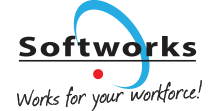The COVID-19 pandemic has reshaped the employment landscape in the United States, leading to a significant surge in compensation levels over the past decade. As businesses navigate the challenges posed by increased employment costs, it becomes imperative to explore innovative solutions. This article delves into the rise in compensation levels in the USA, focusing on the last 10 years, and highlights how workforce management software can help organizations reduce these mounting expenses.
The COVID-19 Effect: Drastic Rise in Compensation Levels
The onset of the COVID-19 pandemic disrupted the labor market dynamics in the United States, leading to unprecedented shifts in compensation levels. Key factors contributing to the rise in compensation include:
Increased Demand for Essential Workers
Sectors such as healthcare, logistics, and e-commerce experienced a surge in demand, leading to higher wages for essential workers.
Changes in Employee Mindset and Labor Shortages
The pandemic created new trends such as The Great Resignation as well as labor shortages in several industries, driving up compensation levels as companies competed to attract and retain skilled workers.
Inflationary Pressures
The economic impact of the pandemic, coupled with expansive fiscal and monetary policies, resulted in inflationary pressures, leading to higher wages and benefits.
Analyzing Compensation Trends: Charts and Data for the Last 10 Years
Utilizing charts and data, let’s examine a few economic trends in the USA over the past decade to provide a comprehensive understanding of the rise in employment costs.
Total Compensations
A glance at the Compensations trends chart for the past 10 years reveals a dramatic surge that strongly correlates with the start of the COVID-19 pandemic. Compensations have skyrocketed to levels that far exceed any recorded point over the past decade.
The chart below vividly demonstrates the remarkable growth trajectory, highlighting the substantial impact the pandemic has had on compensation levels in the United States. The surge in compensations serves as a stark reminder of the unprecedented challenges faced by businesses and the labor market during this extraordinary time. The chart unequivocally demonstrates the immense changes that have occurred, underscoring the magnitude of the pandemic’s influence on employment and compensation in the country.
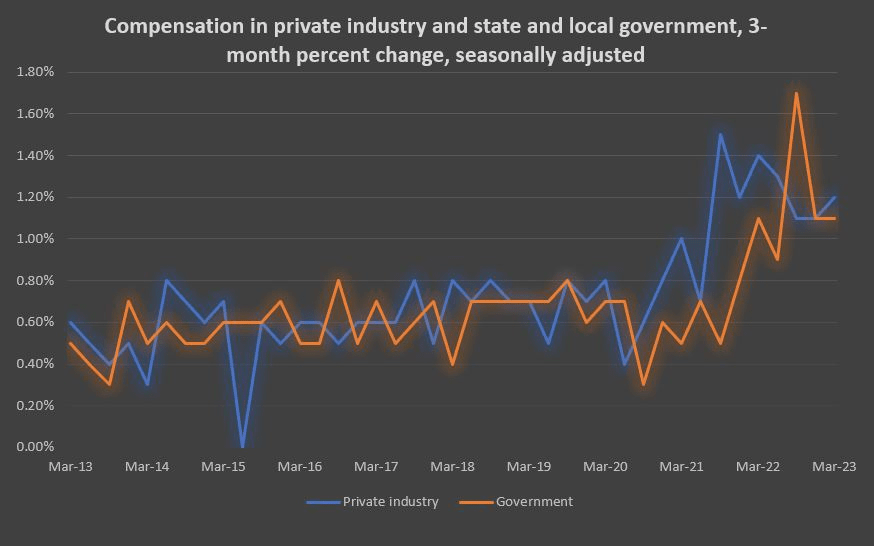
Chart: Compensation in private industry and state and local government, 3-month percent change, seasonally adjusted – 2013 – 2023
Source: U.S. Bureau of Labor Statistics
Consumer Price Index
According to Richard Hernandez from the U.S. Bureau of Labor Statistics, the pandemic has caused disruptions such as supply chain issues and fluctuating energy prices, leading to a significant spike in inflation across all industries. Hernandez stated in his summary,
“As the labor market tightened during 2021 and 2022, core inflation rose due to the increasing ratio of job vacancies to unemployment. This ratio serves as a measure of wage pressures, which then trickle down to affect prices of goods and services. As workers negotiate for higher wages, companies begin to raise prices. The research indicates that the rise in inflation since 2020 can be attributed to three primary factors: volatility of energy prices, backlogs of work orders caused by supply chain issues related to COVID-19, and price changes in the auto-related industries.“
While inflationary pressures have started to ease up in the past two quarters, they remain at elevated levels. It is anticipated that inflation will gradually return to more manageable levels by December 2024.
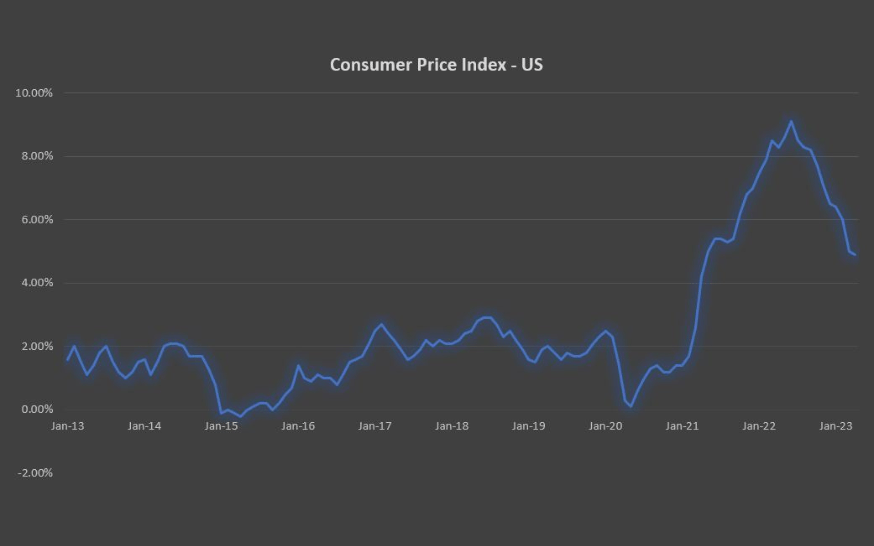
Civilian unemployment rate
The unemployment rate in the US has reached its lowest point in the past 60 years, indicating an incredibly tight labor market. With such a market, it is unlikely that significant loosening will occur anytime soon. However, despite this strong employment landscape, multiple forecasts are predicting layoffs in 2023.
In an effort to tackle ongoing inflationary pressures, the Federal Reserve has taken decisive action by raising interest rates ten times since March 2022. This strategy aims to curb inflation and, over time, may lead to a potential increase in the unemployment rate. The Federal Reserve’s proactive approach seeks to find a delicate equilibrium between controlling inflation and ensuring stability in the labor market.
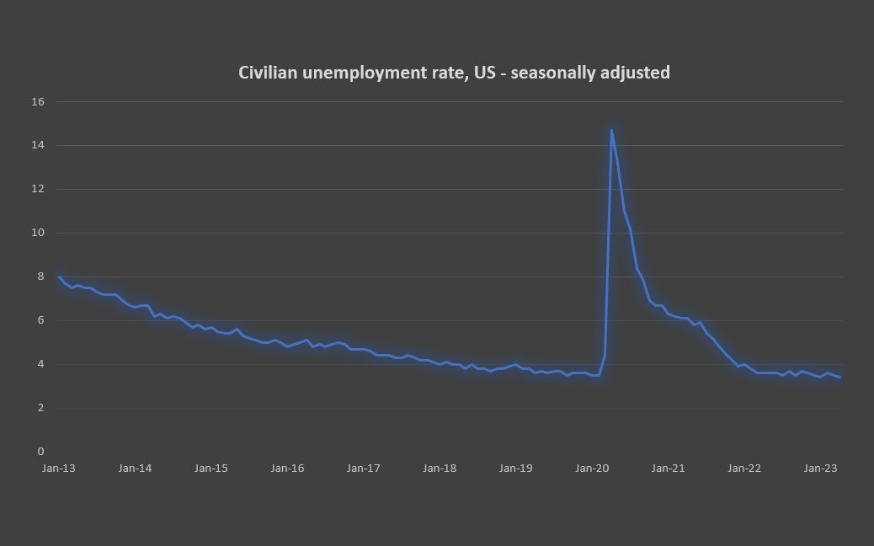
Chart: Civilian unemployment rate US – seasonally adjusted – 2013 – 2023
Source: U.S. Bureau of Labor Statistics
Changes in the labor mindset
The pandemic has brought about significant changes, not only in our daily lives but also in the priorities and mindset of the labor force. Individuals are reevaluating their desires and seeking a better work-life balance. This shift has given rise to noteworthy trends such as The Great Resignation, also known as the Big Quit, and the Great Reshuffle.
In response to these evolving employee preferences, companies are adapting by offering higher wages and appealing perks like remote work, flexible hours, and even four-day work weeks.
This transition is evident in the chart below, where we observe a surge in overall compensations for the Non-union labor force—a group historically impacted heavily during economic crises, such as the one experienced in 2008. Notably, industries such as Retail and Leisure and Hospitality are at the forefront of this trend, recognizing the importance of meeting employee demands in today’s evolving work landscape.
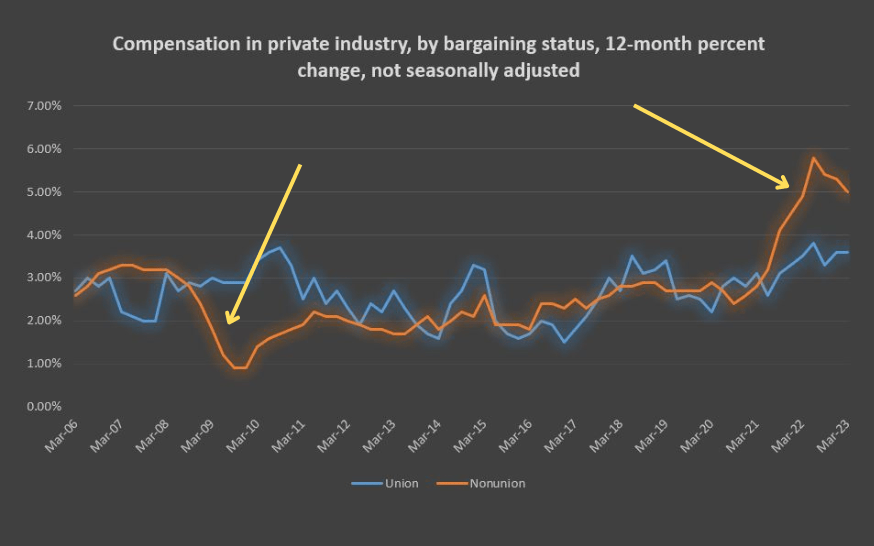
Chart: Compensation in private industry – by bargaining status – 12-month percent change – not seasonally adjusted – 2006 – 2023
Source: U.S. Bureau of Labor Statistics
The Role of Workforce Management Software in Reducing Employment Costs
As we could see from the above analysis, organizations in the United States are confronted with the challenges of rising employment costs, short labor supply and inflation pressure.
However, with the right tools and strategies in place, such as workforce management software, companies can effectively navigate this landscape and drive significant cost savings.
Let’s delve into the various ways in which workforce management software plays a crucial role in reducing employment costs:
Optimal Workforce Planning
Workforce management software empowers organizations to make informed decisions by leveraging historical data for accurate workforce forecasting. This enables businesses to determine the optimal number of employees needed, minimizing the risk of overstaffing. By avoiding unnecessary labor costs, companies can streamline operations and allocate resources efficiently.
Efficient Scheduling
Automated scheduling tools within workforce management software optimize employee schedules based on demand, skill sets, and availability. By aligning workforce capacity with workload requirements, organizations can minimize overtime expenses and reduce the need for temporary staff. This not only cuts down on labor costs but also enhances workforce productivity and ensures seamless operations.
Time and Attendance Tracking
Accurate time and attendance tracking is crucial for managing employment costs. Workforce management software provides real-time insights into employee hours, breaks, and absences, enabling organizations to identify inefficiencies and address them promptly. By curbing unauthorized overtime and minimizing instances of absenteeism, businesses can significantly reduce labor costs and maintain optimal workforce efficiency.
Compliance and Labor Law Adherence
Non-compliance with labor laws can lead to costly penalties and legal complications. Workforce management software automates compliance processes, ensuring adherence to labor regulations and minimizing compliance risks. By accurately tracking employee certifications, breaks, and rest periods, organizations can avoid potential fines and litigation, resulting in substantial savings.
Performance Analytics
Workforce management software offers valuable performance analytics, allowing organizations to assess employee productivity and identify top performers. By recognizing and rewarding excellence, businesses can foster a culture of high performance and motivation, reducing the need for costly hiring and training processes to fill productivity gaps. Moreover, by addressing underperformance through targeted interventions, organizations can optimize workforce output and minimize associated costs.
Facilitating Flexitime and Remote Working Arrangements
In today’s modern work environment, employees increasingly seek flexibility in their work schedules and the option to work remotely. Workforce management software can seamlessly accommodate these demands by providing features that support Flexitime and remote working arrangements. The software enables employees to manage their schedules, request time off, and even work remotely while ensuring smooth operations and adherence to staffing requirements.
By offering flexible work options, companies can attract and retain top talent, enhance employee satisfaction, and potentially reduce costs associated with physical workspace requirements.
Workforce management software plays a pivotal role in reducing employment costs by enabling optimal workforce planning, efficient scheduling, accurate time and attendance tracking, compliance with labor laws, and leveraging performance analytics. By embracing this technology-driven approach, organizations can unlock significant cost savings while maintaining productivity, compliance, and employee satisfaction.
In an ever-evolving business landscape, investing in workforce management software becomes a strategic decision for businesses aiming to achieve financial efficiency and long-term success.
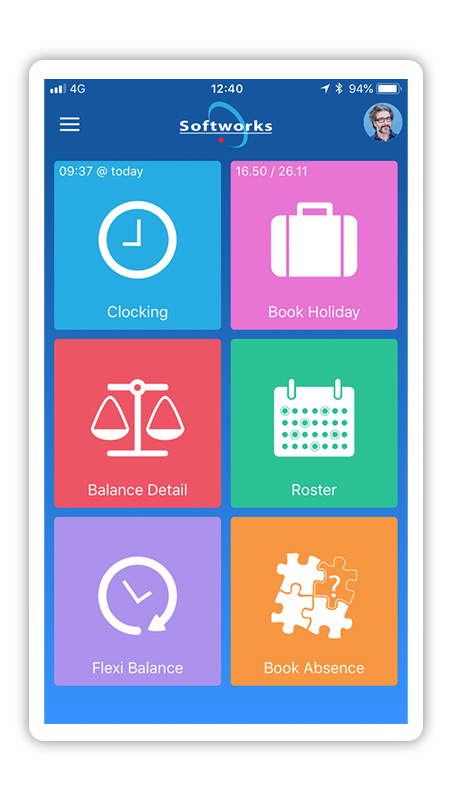
Conclusion
The COVID-19 pandemic has reshaped the employment landscape in the United States, resulting in a significant surge in compensation levels over the past decade. As businesses grapple with rising employment costs, it is crucial to explore innovative solutions. Workforce management software emerges as a powerful tool to navigate these challenges.
The charts and data analysis presented in this article highlight the dramatic rise in compensation levels, driven by factors such as increased demand for essential workers, talent competition, and inflationary pressures. The profound impact of the pandemic on employment and compensation is evident, underscoring the need for effective cost-management strategies.
In summary, workforce management software provides a comprehensive solution to tackle rising employment costs in the United States. By implementing this technology-driven approach, organizations can effectively manage their workforce, reduce expenses, and create a more agile and cost-efficient business environment. Embracing workforce management software is not just a solution for the challenges of today but a strategic investment for the future.
Request a free Demo!
Take the first step towards a complete workforce management solution. Talk to us today!
About Tomislav Rucevic
Tomislav Rucevic, an SEO Specialist at Softworks, stands out as more than just a marketer. He’s a fervent writer and influential thinker passionate about Workforce Management, HR, and work-life dynamics. Holding an MBA in Marketing, Tomislav excels in creating content that delves into the complexities of the modern workplace.
His dedication to writing on these topics is highlighted in his MBA thesis, which examined the link between Employee Motivation and Quality Improvement. At Softworks, he expertly merges his SEO skills with his writing prowess, contributing to the company’s digital success and advancing discussions on enhancing work environments and achieving work-life balance.
